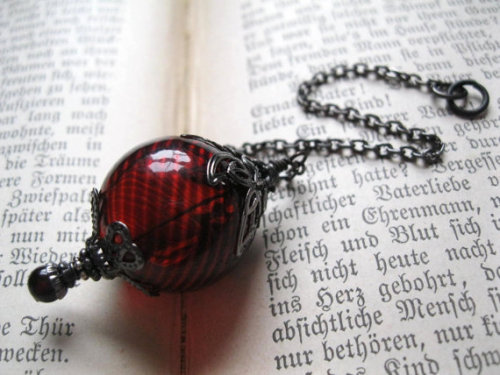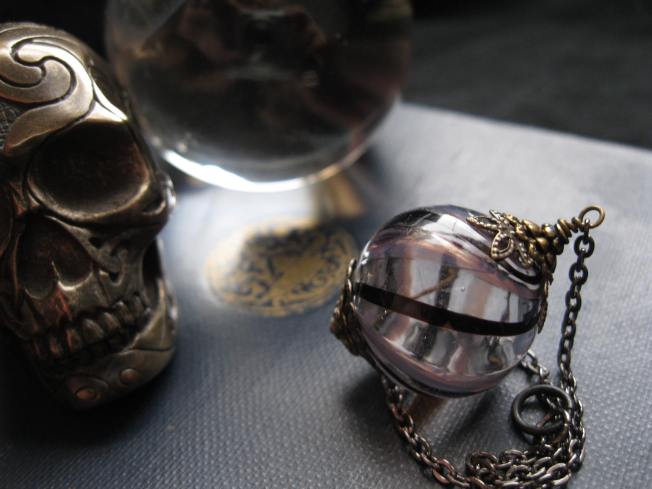
A witch ball is a hollow sphere of plain or stained glass hung in cottage windows in 18th century England to ward off evil spirits, witch's spells or ill fortune.
The witch ball originated among cultures where witches were considered a blessing and these witches would usually "enchant" the balls to enhance their potency against evils. Later, they were often posted on top of a vase or suspended by a cord (as from the mantelpiece or rafters) for a decorative effect. Witch balls appeared in America in the 19th century and are often found in gardens under the name gazing ball. However, gazing balls contain no strands within their interior.

According to folk tales, witch balls would entice evil spirits with their bright colours; the strands inside the ball would then capture the spirit and prevent it from escaping.
Witch balls sometimes measure as large as seven inches (18cm) in diameter. The witch ball is traditionally, but not always, green or blue in color and made from glass (others, however, are made of wood, grass, or twigs instead of glass). Some are decorated in enameled swirls and brilliant stripes of various colors. The gazing balls found in many of today's gardens are derived from the silvered witch balls that acted as convex mirrors, warding off evil by reflecting it away.

Because they look similar to the glass balls used on fishing nets, witch balls are often associated with sea superstitions and legends. In the Ozark Mountains, a witch ball is made from black hair that is rolled with beeswax into a hard round pellet about the size of a marble and is used in curses. In Ozark folklore, a witch that wants to kill someone will take this hair ball and throw it at the intended victim; it is said that when someone in the Ozarks is killed by a witch's curse, this witch ball is found near the body..

























1 comment:
Similar to the Druid 'Pelen Tan'.
Post a Comment